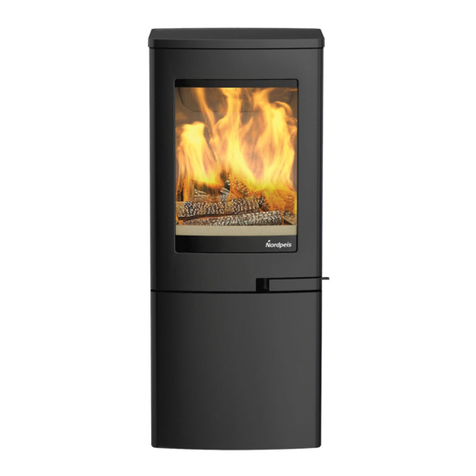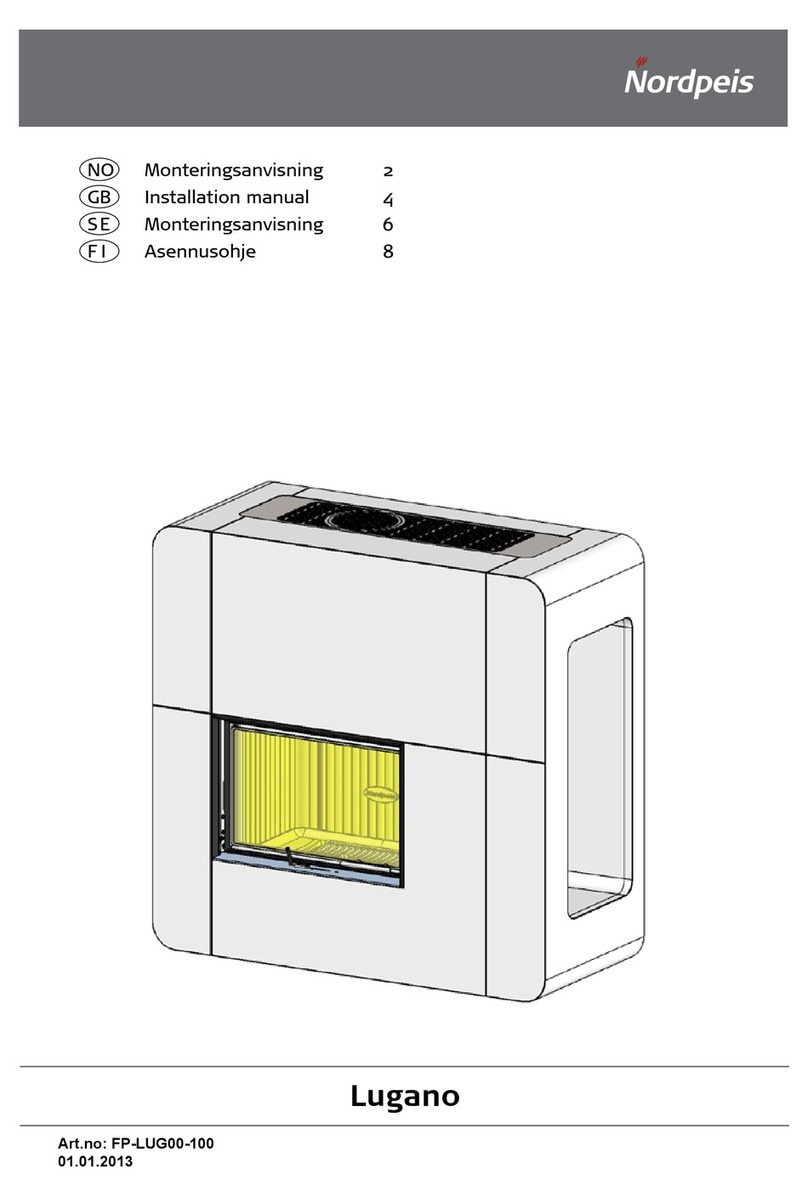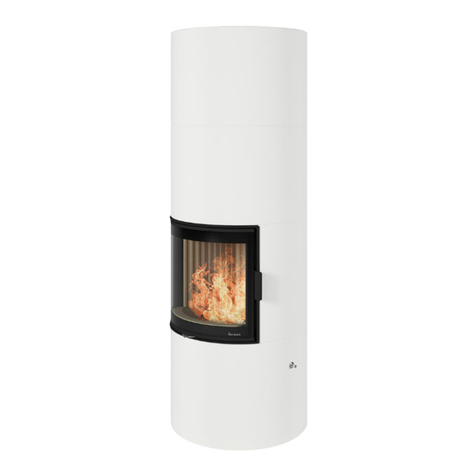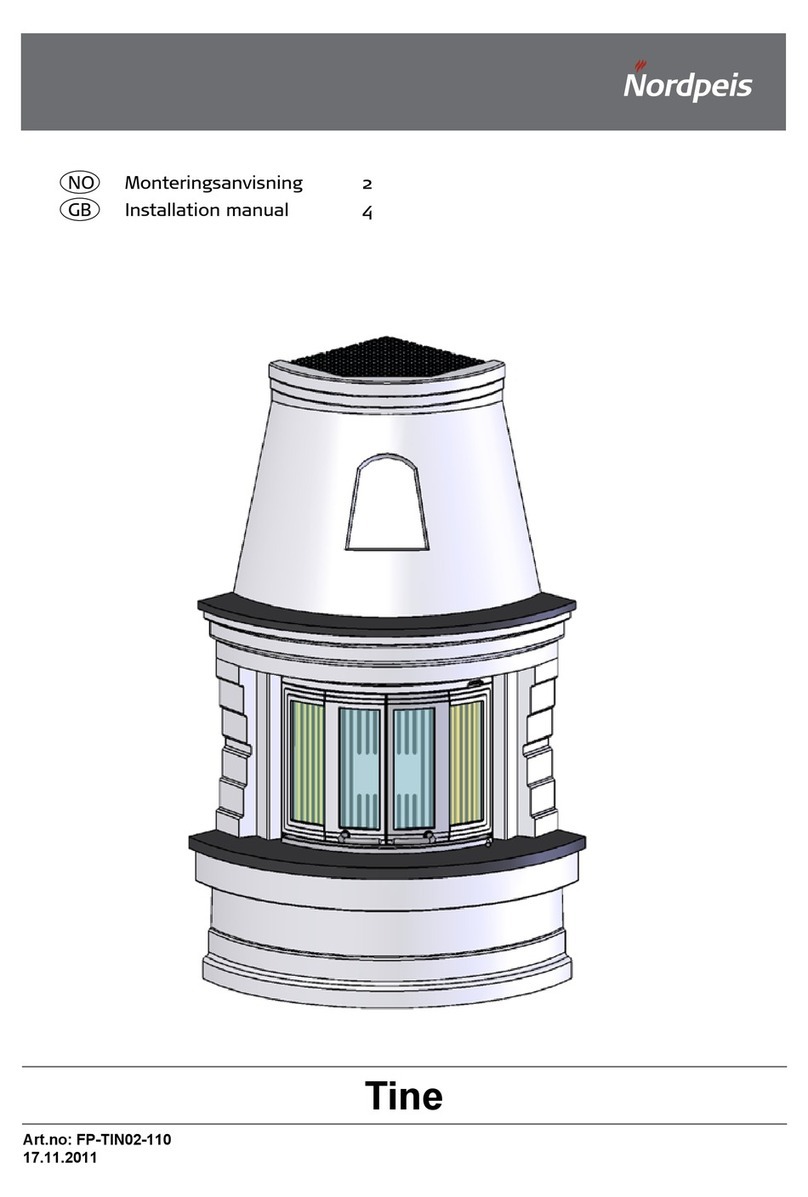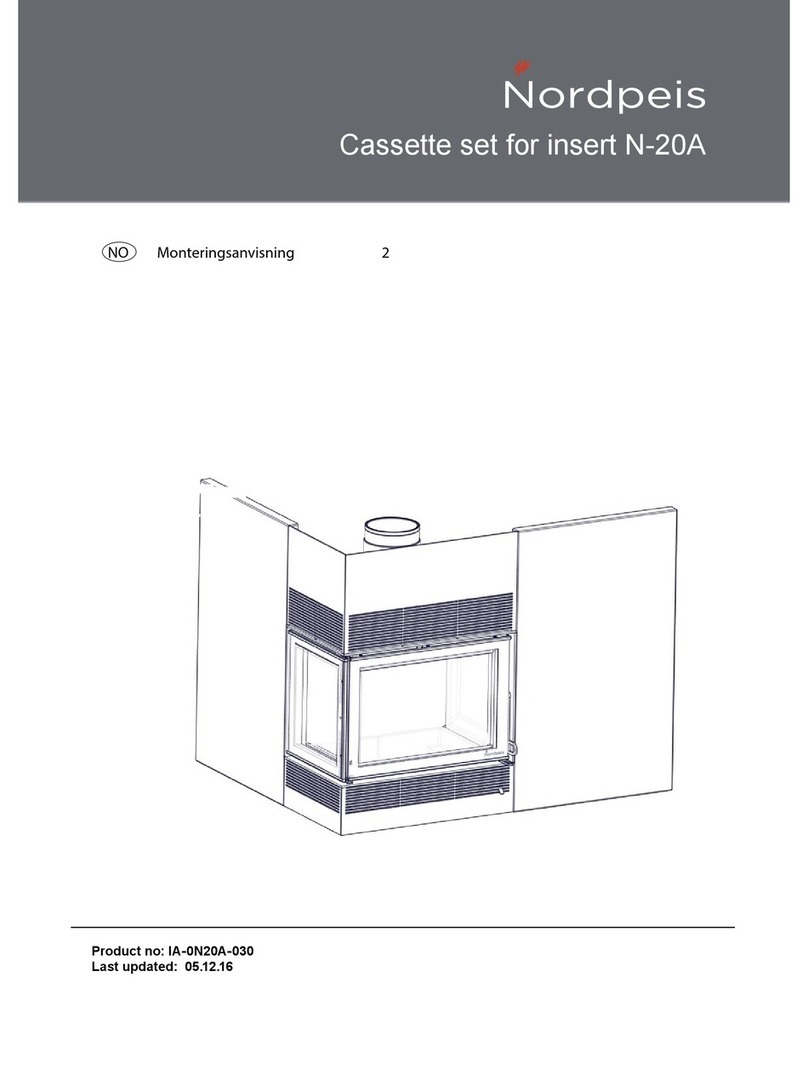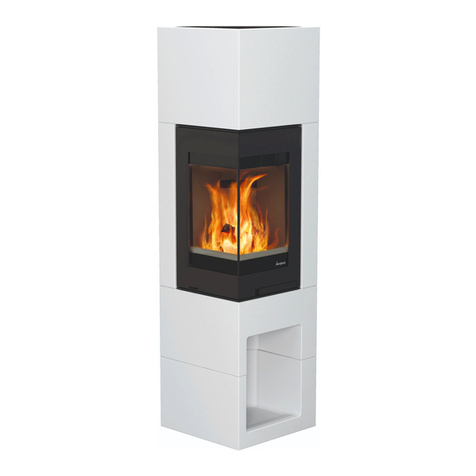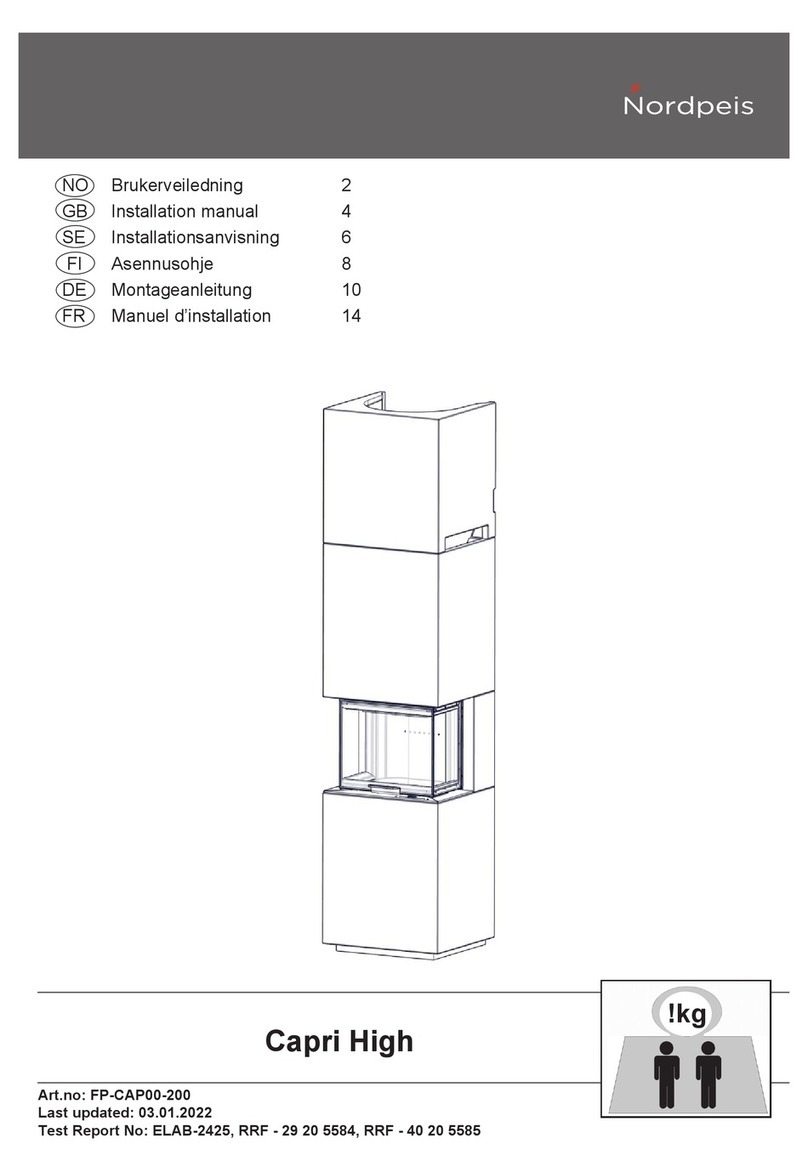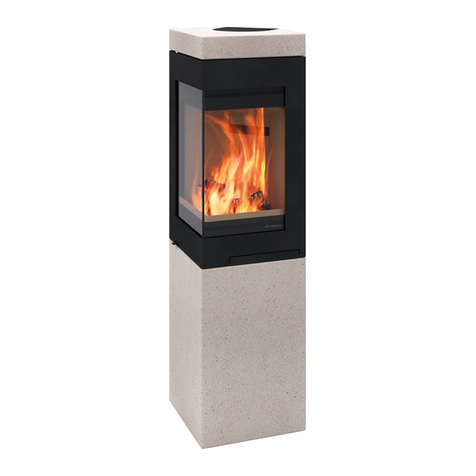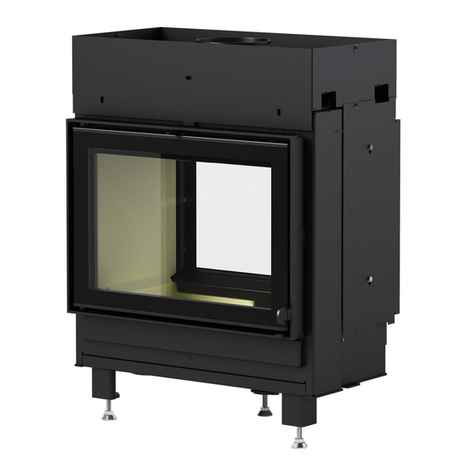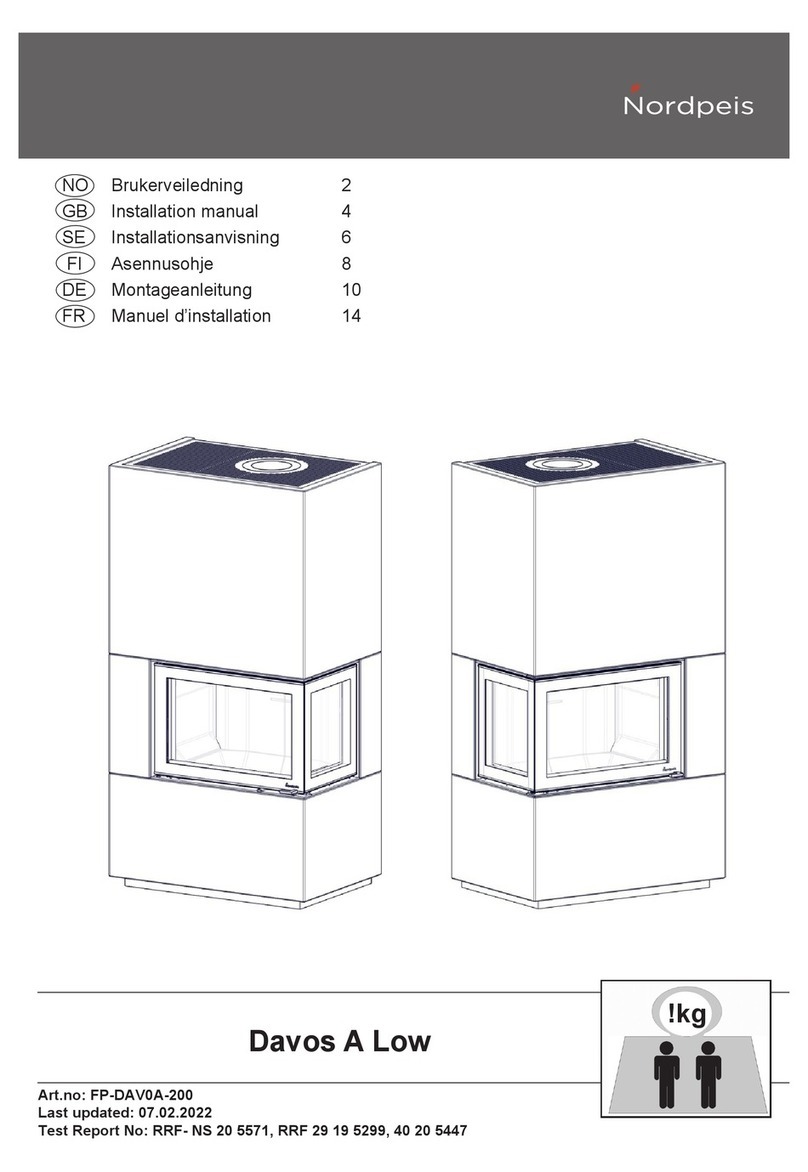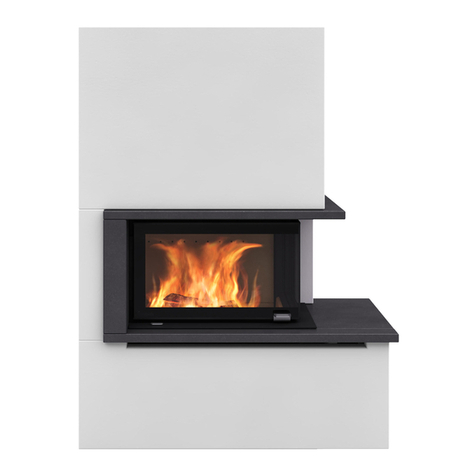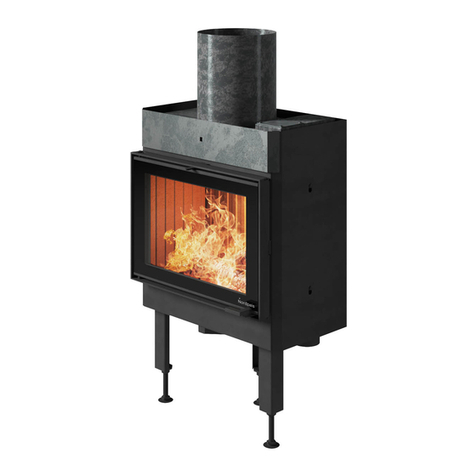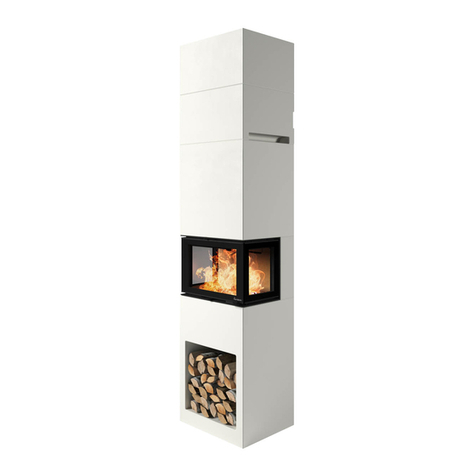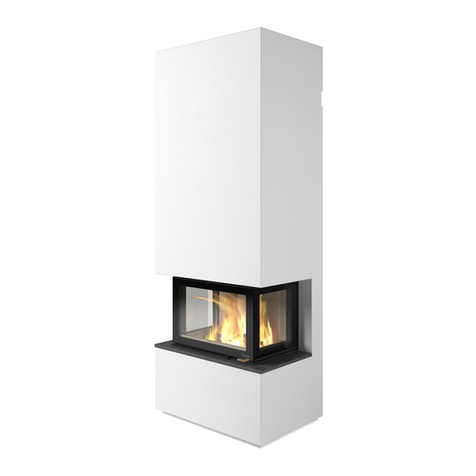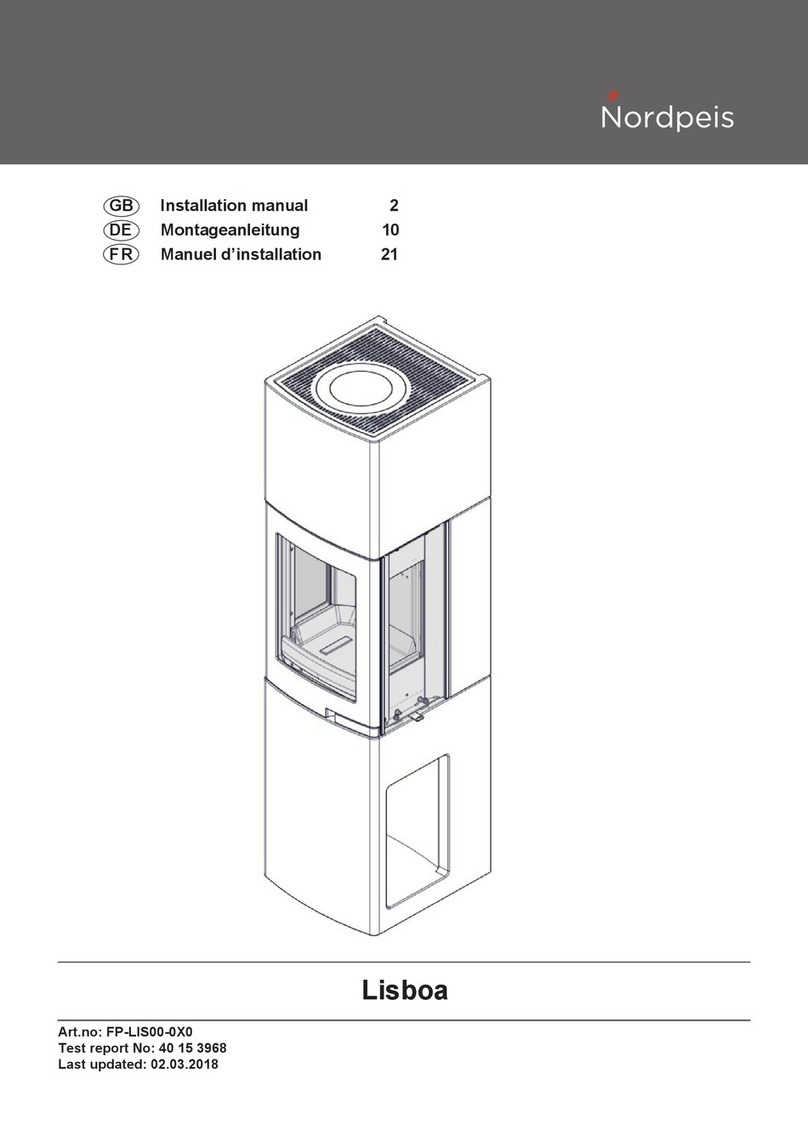Dør og glass
Dersom glassruten er sotete, kan det være nødvendig å
pusse/rengjøre glasset. Bruk glassrens som er beregnet
for dette (NB! Vær forsikting, glassrens kan skade
lakken på dørrammen). Brukes andre rengjøringsmidler
kan det skade glasset. Et godt tips til rengjøring er å
bruke en fuktig klut eller kjøkkenpapir og ta på litt sot fra
brennkammeret. Gni asken rundt på glasset og avslutt
med et rent og fuktig kjøkkenpapir. NB! Rengjøring må
kun gjøres når glasset er kaldt.
Kontroller regelmessig at overgangen mellom glasset
og døren er helt tett. Stram eventuelt til skruene som
holder glasset på plass – men ikke for hardt, da dette
kan føre til at glasset sprekker. Med jevne mellomrom
kan det være nødvendig å skifte tetningslistene på
døren for å sikre at ildstedet fortsatt er tett og fungerer
optimalt. Disse fås kjøpt som sett med keramisk lim
inkludert.
Peisglass skal kastes i
restavfallet sammen med
keramikk og porselen
PEISGLASS KAN
IKKE GJENVINNES
Gjenvinning av glass
Ildfast glass kan ikke gjenvinnes. Alt av gammelt
peisglass, brekkasje eller annet ubrukelig ildfast glass,
må kastes i restavfallet. Ildfast glass har høyrere
smeltetemperatur, og kan derfor ikke gjenvinnes
sammen med brukt emballasjeglass. Blandes dette
med brukt emballasjeglass, ødelegges råvaren og
gjenvinning av brukt emballasjeglass kan i verste fall
stoppe. Når du sørger for at ildfast glass ikke havner i
returpunktene, er det en hjelp som er et viktig bidrag for
miljøet.
Gjenvinning av emballasje
Emballasjen som følger produktet skal gjenvinnes etter
det gjeldene lands forskrifter.
7. Garanti
For utførlig beskrivelse av garantibestemmelser, se
vedlagte garantikort eller besøk våre nettsider www.
nordpeis.no
CE-merkingen er plassert under ovnen.
Advarsel!
Kun bruk reservedeler anbefalt av produsent.
Advarsel! Endring eller modisering av produktet
skal skriig godkjennes av Nordpeis
8. Fyringstips
Den beste måten å tenne opp et ildsted er ved bruk av
opptenningsbriketter og kløyvet, tørr småved. Aviser
gir mye aske og trykksverten er ikke bra for miljøet.
Reklamer, magasiner, melkekartonger og lignende er
ikke egnet for opptenning i peis. Det er viktig med god
lufttilførsel ved opptenning. Når skorsteinen blir varm
øker trekken og døren kan lukkes.
Advarsel: Bruk ALDRI opptenningsvæske
som bensin, paran, rødsprit eller lignende
til opptenning. Du kan skade både deg selv
og produktet.
Bruk alltid ren og tørr ved med et maksimalt fuktinnhold
på 20%. Veden bør minimum tørkes et halvt år etter
hugging. Fuktig ved krever mye luft til forbrenningen
fordi det må brukes ekstra energi/varme til å tørke ut
det fuktige treet. Dette gir mindre varmeavgivelse til
omgivelsene samtidig som det fører til sotdannelse
på glasset og i skorsteinen, med fare for beksot og
pipebrann.
Lagring av ved
For å forsikre seg om at veden er tørr, bør treet
felles om vinteren og lagres om sommeren under tak
på et sted med god utlufting. Vedstabelen må aldri
dekkes av en presenning som ligger mot jorden, da
presenningen vil fungere som et tett lokk som vil
forhindre veden i å tørke. Oppbevar alltid en mindre
mengde ved innendørs i noen dager før bruk, slik at
fukten i overaten på veden kan fordampe.
Fyring
For lite luft kan medføre at glasset sotes. Tilfør derfor
luft til bålet like etter at brenselet er lagt på, slik at det er
ammer i brennkammeret og gassene forbrennes. Åpne
opptennings-/fyringsventilen eller ha døren litt på gløtt
til ammene får godt tak.
Merk at lufttilførsel til forbrenningen også kan bli for
stor og gi en ukontrollerbar amme som svært raskt vil
varme opp hele ildstedet til en ekstremt høy temperatur
(gjelder fyring med lukket, eller nesten lukket dør). Fyll
derfor aldri brennkammeret helt opp med ved.
Valg av brensel
Alle typer tre, som bjørk, bøk, eik, alm, ask og frukttre
kan brukes som brensel i innsatsen. Tresorter har
forskjellige hardhetsgrader - jo høyere hardhetsgrad
veden har, desto høyere er energiverdien. Bøk, eik og
bjørk har den høyeste hardhetsgraden.
NB! Vi anbefaler ikke bruk av fyringsbriketter/
kompaktved i våre brennkamre, da disse produktene
kan utvikle vesentlig høyere temperatur enn
Advarsel! For å unngå brannskader, må du være
oppmerksom på at alle overater kan bli varme
under bruk.
